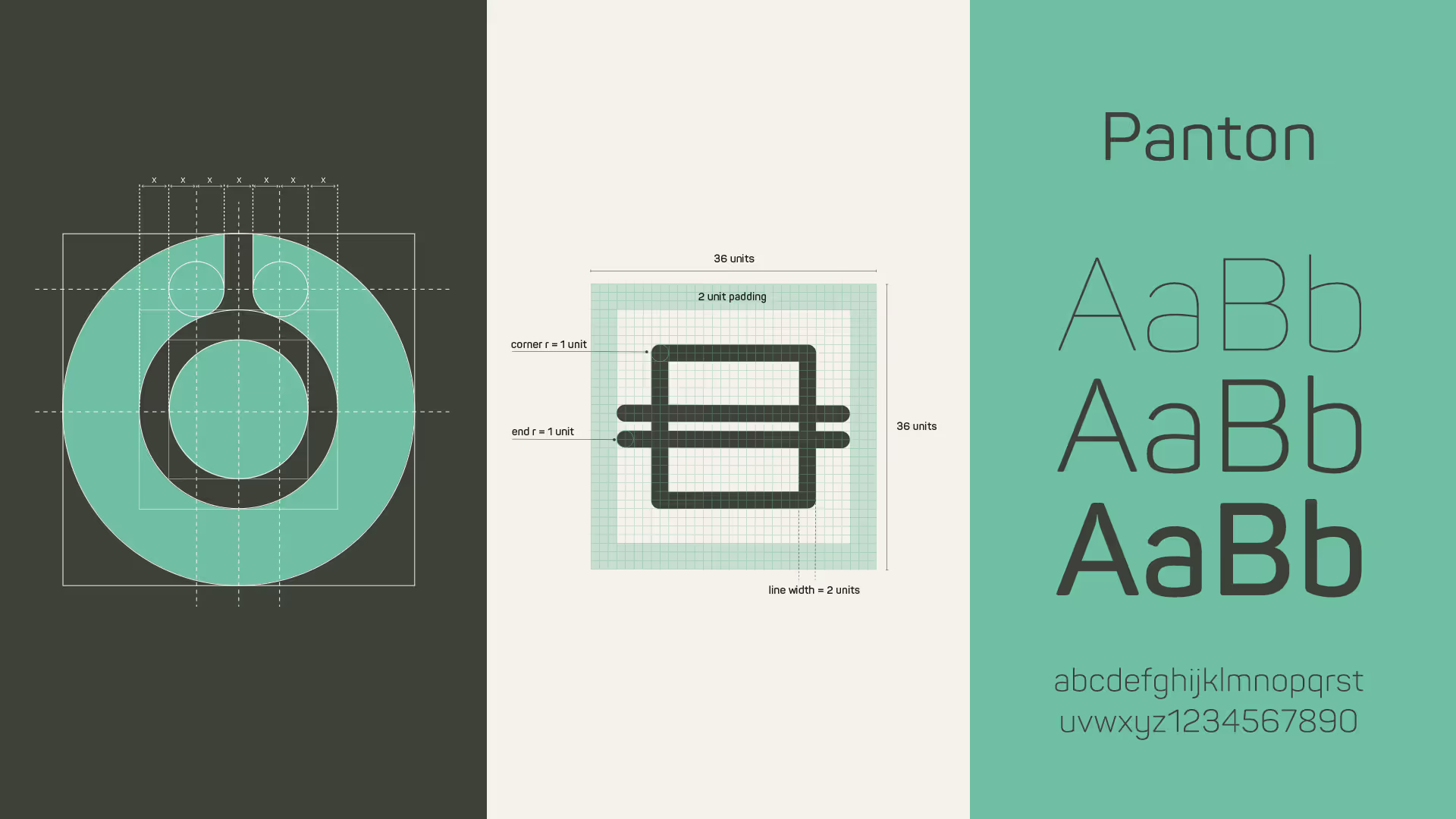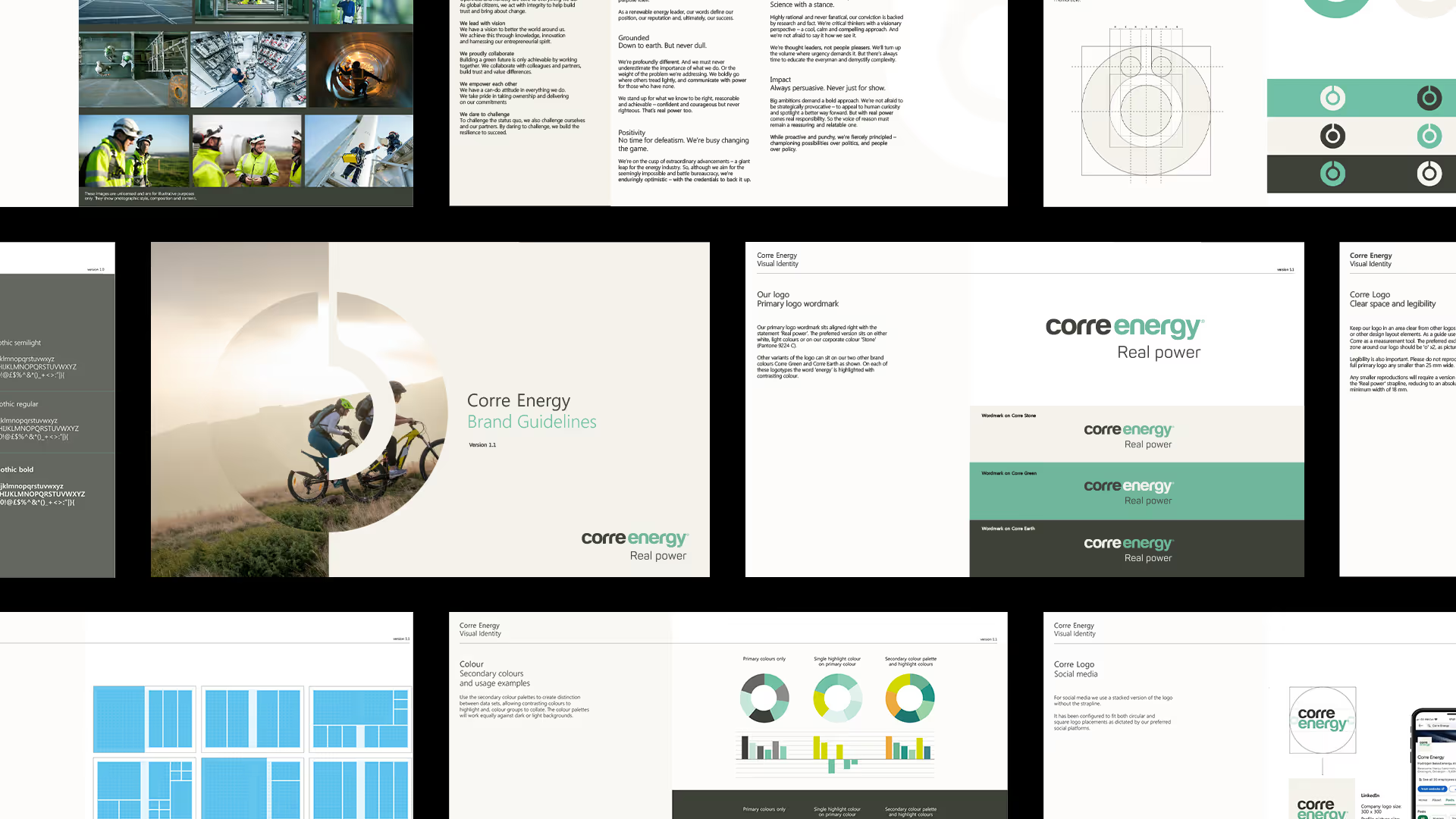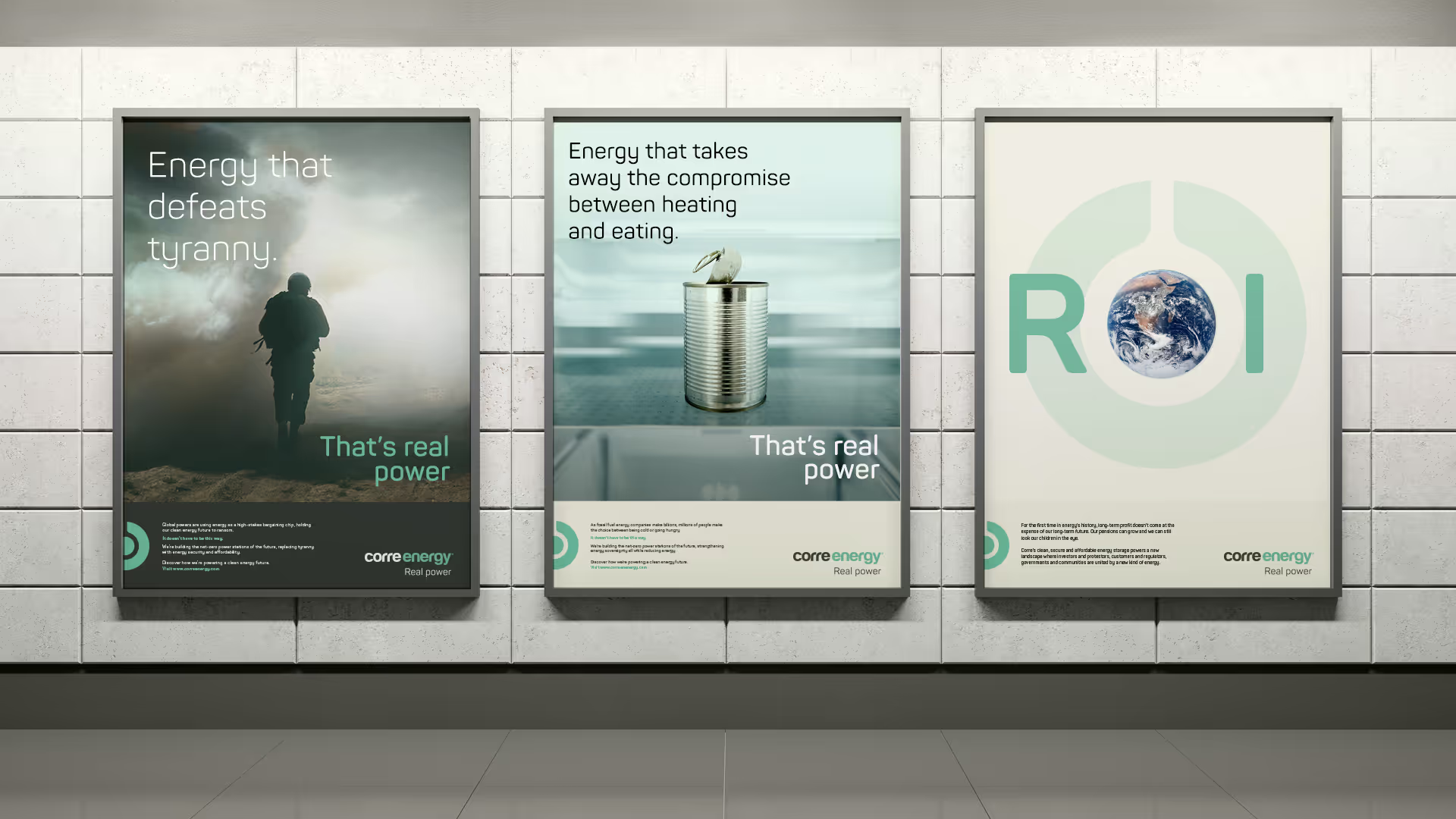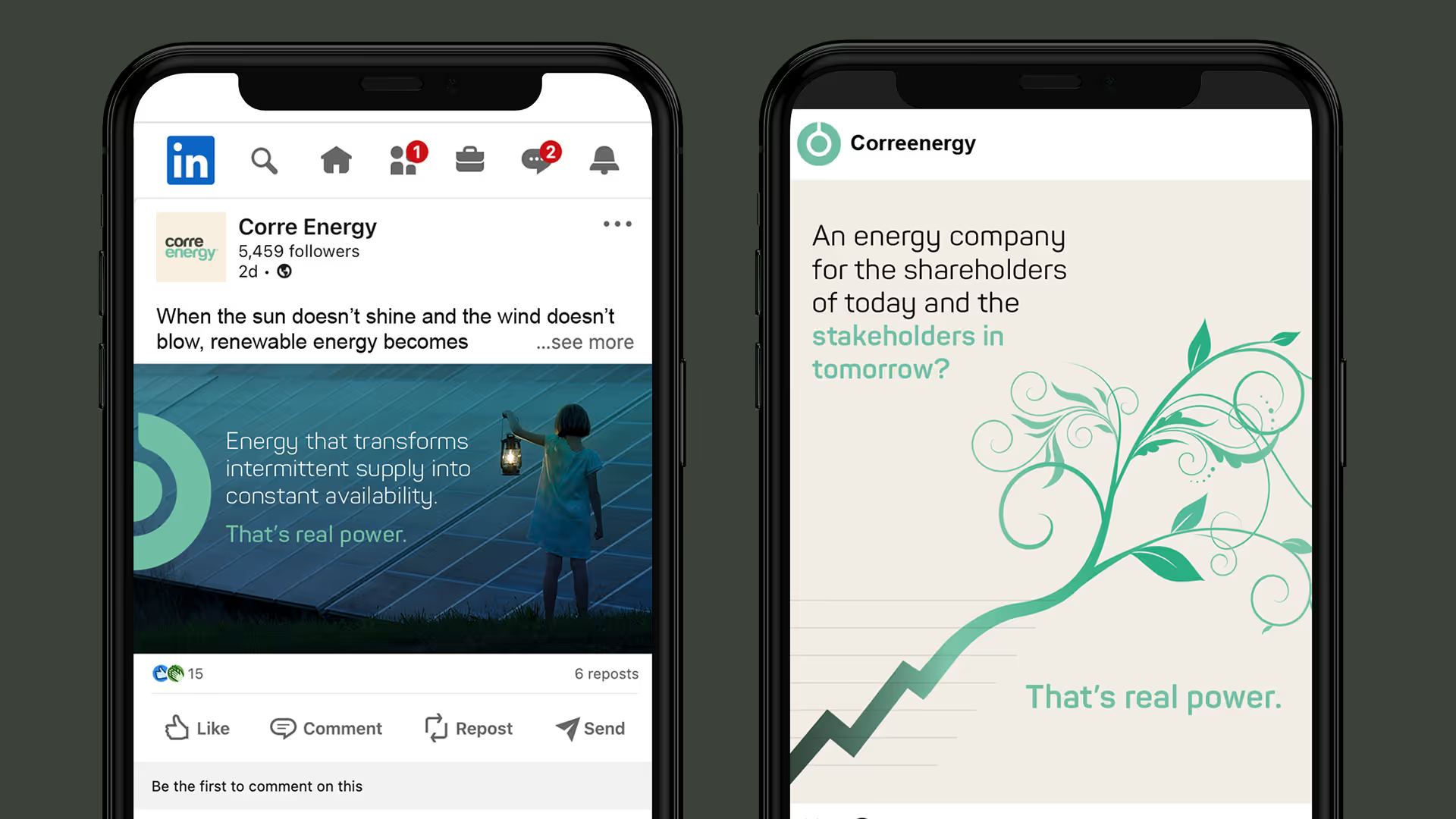
A strong B2B brand isn’t just a nice-to-have.
It’s a core driver of commercial success – building trust, attracting customers and creating lasting preference in a crowded market.
But what actually makes a brand successful?
It’s not just a logo or a colour palette. It’s an interconnected system of elements that work together to create a clear, consistent, and compelling experience.
Below you’ll find a step-by-step checklist of what you really need for a successful brand, complete with explanations and practical considerations to help you evaluate what you have, what you might be missing and where you can improve.
1. Clear purpose and positioning
Why does your business exist, beyond making money? Who are you for, and why should they choose you?
A successful brand is built on clarity of purpose and sharp market positioning. This isn’t marketing fluff – it’s the strategic foundation that aligns everything you do.
What to look for:
- A clear purpose statement that defines why you exist and what you aim to achieve.
- Defined vision – where you’re going and how you plan to get there.
- A strong positioning statement that clearly articulates who your audience is, what you offer, and how you’re different from competitors.
- Customer and competitor insights that validate your positioning.
Why it matters:
Without a clear purpose and positioning, your brand risks blending in with everyone else or sending mixed signals. A clear, differentiated position helps customers understand why you’re the right choice.

2. Defined values and brand personality
What do you stand for? How do you want to come across?
Your brand values are more than words on a wall. They guide your decisions, behaviour and communications. Personality gives your brand human qualities people can relate to.
What to look for:
- Documented brand values that are authentic and actionable.
- Clear brand personality traits (e.g., friendly, authoritative, innovative) that shape tone and style.
- Practical guidelines for applying these values and traits in communications, service, and culture.
Why it matters:
Customers don’t just buy what you do – they buy how you make them feel. Clear values and personality help build emotional connection and trust.

3. Distinctive visual identity
Does your brand stand out and feel coherent wherever it appears?
Visual identity isn’t just aesthetics – it’s a crucial part of brand recognition and recall.
What to look for:
- A distinctive logo suite that works across channels and sizes.
- A defined colour palette that is ownable and used consistently.
- Chosen typography that supports your brand’s tone.
- Imagery style or guidelines (photography, illustration) that unify visual expression.
- Iconography and design elements that are uniquely yours.
Why it matters:
Distinctive, consistent visuals make you instantly recognisable and memorable. In crowded markets, being recognisable is half the battle.

4. Consistent tone of voice and messaging
Do you always sound like the same organisation, no matter who’s writing?
Your tone of voice and messaging define how you speak to your audience. Consistency builds familiarity and trust.
What to look for:
- Tone of voice guidelines with practical examples.
- Messaging frameworks that cover brand pillars and key messages.
- Audience segmentation insights that inform tailored messaging.
- Templates for standard communications (emails, proposals, social posts) that reinforce brand voice.
Why it matters:
Customers notice when you sound scattered or insincere. A consistent, well-defined voice builds authority and connection.

5. Compelling brand story
Can you explain clearly and memorably why you exist and why you matter?
People remember stories, not bullet points. Your brand story ties together purpose, values, and proposition in a way that resonates.
What to look for:
- A clear origin or purpose story that connects emotionally.
- Customer success stories that prove your value.
- Brand narrative frameworks that unify messaging across channels.
- An elevator pitch that’s clear, compelling, and consistent.
Why it matters:
A strong brand story helps your team sell your value proposition clearly, while making you memorable to customers.

6. Comprehensive brand guidelines
Do people know how to use your brand assets correctly?
Brand guidelines ensure everyone – internally and externally – applies your brand consistently.
What to look for:
- Visual guidelines (logo use, colour specs, typography, imagery rules).
- Tone of voice and messaging guidelines.
- Rules for print, digital, social media, advertising.
- Guidance for partners, suppliers, and agencies.
Why it matters:
Without guidelines, even the best-designed brand fragments quickly. Consistency builds credibility and trust.

7. Memorable brand assets
Do you have unique, ownable assets that set you apart?
Brand assets are the cues people remember and associate with you.
What to look for:
- Visual assets (logo variations, patterns, icons).
- Verbal assets (taglines, key phrases).
- Sonic assets (jingles, audio logos) if applicable.
- Distinct design systems that unify your look and feel.
Why it matters:
Memorable, distinctive assets increase recall and make you easy to recognise across touchpoints.

8. Strong customer experience aligned with your brand
Does your experience deliver on your brand promise?
Your brand isn’t just what you say – it’s what you do.
What to look for:
- Customer journey mapping to identify pain points.
- Consistent service standards across teams.
- Staff training that embeds brand values.
- Feedback systems to monitor and improve experience.
Why it matters:
No amount of marketing can fix a brand promise you don’t keep. Customer experience is where your brand becomes real.

9. Internal engagement and brand culture
Do your people understand and live the brand?
Your team are your most important brand ambassadors.
What to look for:
- Brand onboarding materials for new staff.
- Regular internal communications that reinforce brand values.
- Leadership buy-in and modelling of brand behaviours.
- Staff recognition aligned with brand values.
Why it matters:
Customers notice when employees aren’t aligned. An engaged team delivers consistent, authentic brand experiences.

10. Activation and marketing plan
How will you bring your brand to life in the market?
Branding doesn’t work if it stays in a PDF. Activation is the plan to communicate and deliver your brand everywhere it matters.
What to look for:
- Defined marketing objectives linked to business goals.
- Campaign and content strategies aligned with brand.
- Paid, owned, and earned media plans.
- Consistent brand delivery across touchpoints, from website to events.
Why it matters:
A great brand needs to be visible, compelling, and consistent wherever your audience encounters it.

11. Measurement and optimisation
How will you know it’s working?
Brand isn’t set-and-forget. Measurement ensures your investment is delivering – and tells you where to improve.
What to look for:
- Brand awareness and perception tracking.
- Customer satisfaction and loyalty metrics.
- Website and campaign analytics.
- Regular brand health reviews and refinements.
Why it matters:
Strong brands evolve to stay relevant. Measurement lets you make informed decisions about brand investment.

Ready to see how you measure up?
Building a successful brand is a journey – but it’s one that delivers real, measurable business value.
Want to see where you stand?
We’ve turned this detailed guide into a practical Brand Success Checklist you can download for free.
- Audit what you already have.
- Identify what’s missing.
- Get your team aligned on next steps.
How we can help
Not every business has all of these elements in place – and that’s where we come in.
At Proctor + Stevenson, we help businesses at every stage of their brand journey:
- Defining purpose and positioning.
- Designing distinctive visual and verbal identities.
- Developing clear brand guidelines.
- Aligning teams around your brand promise.
- Activating your brand across channels and markets.
- Measuring impact and refining your approach.
If you’re ready to strengthen your brand, or simply want to discuss where you are today, we’d love to help.
Get in touch to start the conversation.
Email us at marketing@proctorsgroup.com
Or give us a call at: 0117 923 2282
Ready to make your brand work harder?
If you’re ready to get a second opinion on your brand’s effectiveness, we’re here to help.
Book a free 30-minute brand consultation with one of our experts.








